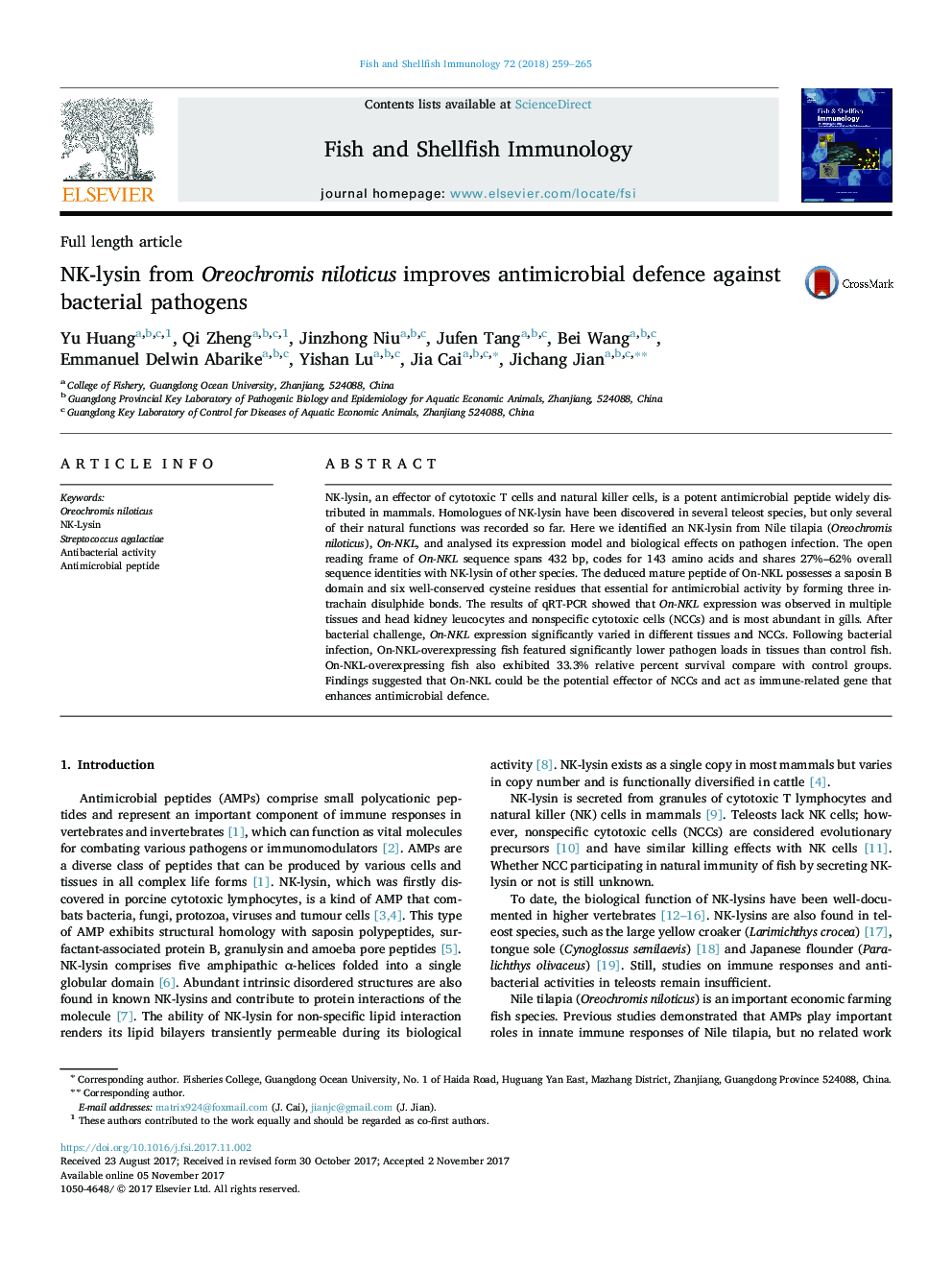| Article ID | Journal | Published Year | Pages | File Type |
|---|---|---|---|---|
| 8498856 | Fish & Shellfish Immunology | 2018 | 7 Pages |
Abstract
NK-lysin, an effector of cytotoxic T cells and natural killer cells, is a potent antimicrobial peptide widely distributed in mammals. Homologues of NK-lysin have been discovered in several teleost species, but only several of their natural functions was recorded so far. Here we identified an NK-lysin from Nile tilapia (Oreochromis niloticus), On-NKL, and analysed its expression model and biological effects on pathogen infection. The open reading frame of On-NKL sequence spans 432 bp, codes for 143 amino acids and shares 27%-62% overall sequence identities with NK-lysin of other species. The deduced mature peptide of On-NKL possesses a saposin B domain and six well-conserved cysteine residues that essential for antimicrobial activity by forming three intrachain disulphide bonds. The results of qRT-PCR showed that On-NKL expression was observed in multiple tissues and head kidney leucocytes and nonspecific cytotoxic cells (NCCs) and is most abundant in gills. After bacterial challenge, On-NKL expression significantly varied in different tissues and NCCs. Following bacterial infection, On-NKL-overexpressing fish featured significantly lower pathogen loads in tissues than control fish. On-NKL-overexpressing fish also exhibited 33.3% relative percent survival compare with control groups. Findings suggested that On-NKL could be the potential effector of NCCs and act as immune-related gene that enhances antimicrobial defence.
Keywords
Related Topics
Life Sciences
Agricultural and Biological Sciences
Aquatic Science
Authors
Yu Huang, Qi Zheng, Jinzhong Niu, Jufen Tang, Bei Wang, Emmanuel Delwin Abarike, Yishan Lu, Jia Cai, Jichang Jian,
